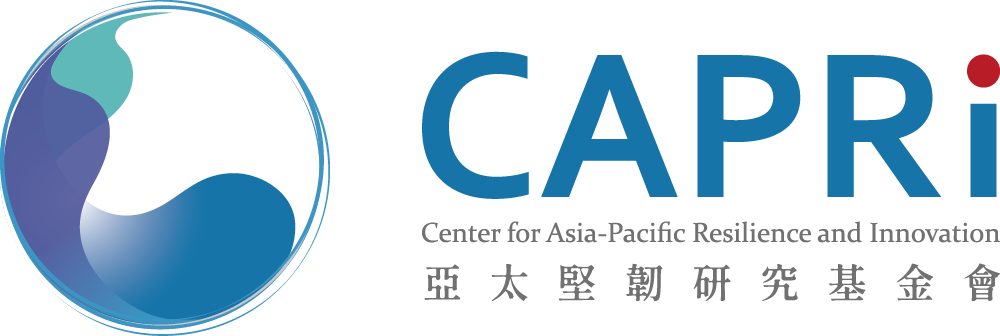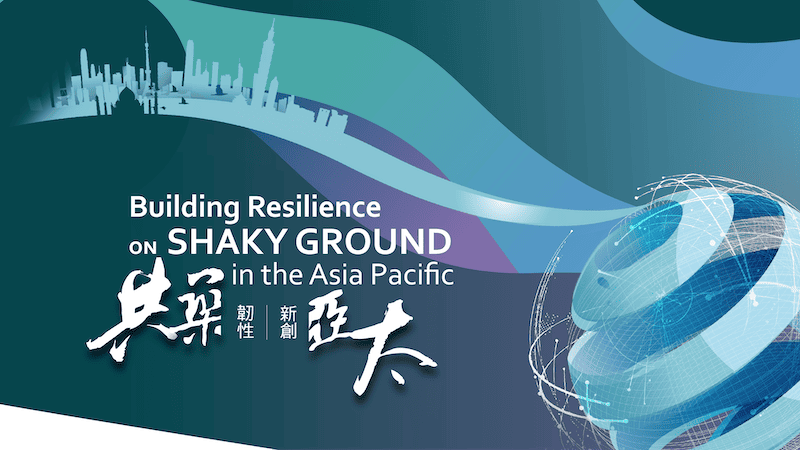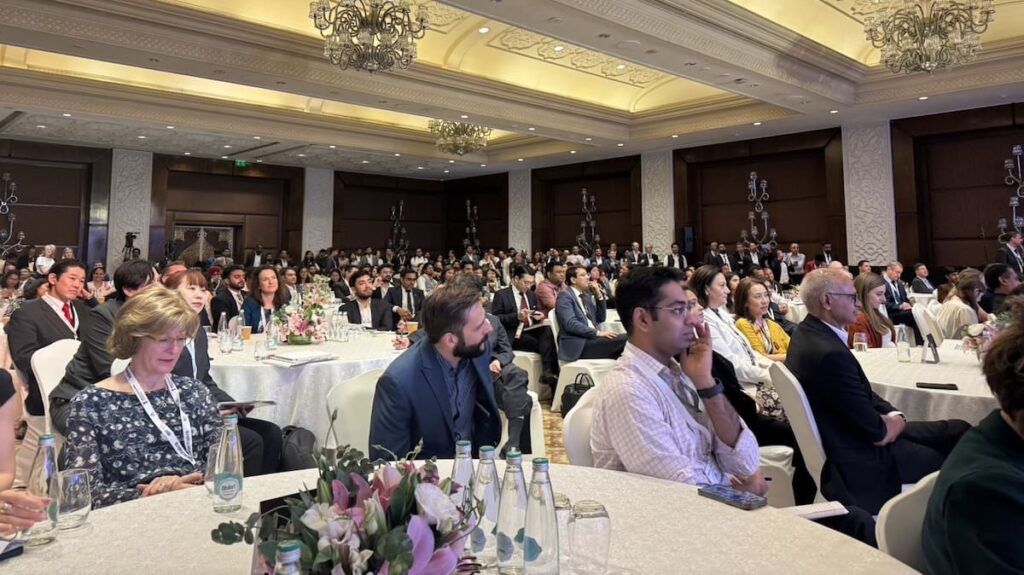The closely watched 2024 Taiwan presidential election recently concluded with the winning of Lai Ching-te, current vice president of the ruling Democratic Progressive Party. In the legislature, however, no political party gained a majority.
In this Winston Lord Roundtable Series on Asia, the Rule of Law, and U.S. Foreign Policy sponsored by the Council on Foreign Relations, Syaru Shirley Lin, Founder and Chair of the Center for Asia-Pacific Resilience and Innovation (CAPRI), discusses the implications of the presidential and legislative elections in terms of its changing social, political, and economic complexion and Taiwan’s future relations with the United States and China.
The virtual roundtable was presided by Jerome A. Cohen, Adjunct Senior Fellow for Asia at the Council on Foreign Relations and a distinguished expert on Chinese law who is known for his significant contributions to legal education and human rights in Asia, especially in China and Taiwan.
Watch the program on the Council on Foreign Relations website
Transcript of Syaru Shirley Lin’s opening remarks:
Introduction
Thank you, Jerry. It is great to be here after my last roundtable with you back in March 2019. Since then, I have been living primarily in Taiwan, establishing the Center for Asia-Pacific Resilience and Innovation (CAPRI), Taiwan’s first international nonpartisan think tank. January was certainly an exciting month for us at CAPRI, where we have been talking with leaders in academia, business and civil society, and Taiwanese policymakers—including legislators from all three major political parties—about what this election means for Taiwan, the region, and the world.
Since Taiwan began to vote directly for its president, I think the 2024 election was the first one seriously focused on domestic policy rather than on differences in national identity and foreign policy. All three candidates were born in Taiwan for the first time ever, and none has any substantive experience in cross-strait relations or foreign policy. None has spent much time in the US or abroad. Voters largely identify with a Taiwanese, rather than Chinese, identity, which prompted the presidential candidates to converge their foreign policy platforms around protecting Taiwan’s sovereignty and rejecting China’s “one country, two systems” formula that has been so harshly applied in Hong Kong. Meanwhile, Taiwan has become more ensnared in the high-income trap, which I have been writing about recently, plagued by problems such as unaffordable housing, stagnating wages, an aging population, low fertility, energy insecurity, and rising entitlements. These are the issues which really took center stage in the January 13 national elections in Taiwan.
Today, I’d like to analyze the results of the election, interpret the lessons offered for Taiwan’s political parties, discuss the implications of this election for the US and China, and look at the prospects for the 2026 local elections and the next national elections in 2028.
Election results
Three weeks ago, Taiwanese voters handed the Democratic Progressive Party, or DPP, an unprecedented third term in the presidency. This was Taiwan’s eighth democratic presidential election, and 72% of the island’s 19.5 million voters turned out in person to cast their ballots in neighborhood voting stations in their hometowns.
The three-way race resulted in a victory for current vice president Lai Ching-te, who won 40% of the vote in the first-past-the-post voting system. The Kuomintang candidate, Hou Yu-Ih, won 33%, and the Taiwan People’s Party candidate, Ko Wen-je, won 26%. This result is largely consistent with polling projections leading up to the election, which predicted a victory for Lai but by a plurality much smaller than President Tsai Ing-wen’s margin of victory in 2020 and 2016; both times, she won over 50% of the vote. Pre-election polling also predicted a close second-place finish for Hou of the KMT, with a substantial share of votes going to Ko, who positioned his party, the TPP, as an alternative to the two establishment parties.
In the legislative election, each voter chooses a candidate to represent their district and also votes for their preferred political party. Of the 113 seats in the legislature, 73 district representatives are directly elected, along with 34 “at large” seats that are allocated proportionally based on the voters’ party list selections. The remaining six seats represent indigenous Taiwanese groups, which constitute over 2% of Taiwan’s population.
Altogether, the election gave the DPP 51 seats, the KMT 52 seats, the TPP 8 seats, and 2 seats went to pro-KMT independent candidates. The DPP lost its 8-year majority in the legislature, while no party won a majority. With a majority of 57 votes needed to pass bills, the eight TPP representatives could have crucial sway in passing and blocking bills. Unlike third parties that have gained seats in the past, the centrist TPP may not consistently side with either the blue KMT or green DPP camps. The TPP could also side with neither camp. In fact, when the newly elected parliament convened for the first time on February 1 to elect the speaker, all eight TPP legislators walked out of the final run-off vote, thereby effectively awarding the role to Han Kuo-Yu of the KMT.
In Taiwan, the executive branch, led by the president, sets foreign policy, including policy toward China, while the legislative branch controls domestic policy and the issues affecting day-to-day life. From 2016 until now, the DPP had control of both branches and could efficiently enact both its foreign and domestic policies. But from this year, the DPP’s mandate will weaken considerably with a divided parliament that will force policymaking to slow down. And in the latest Taiwanese Public Opinion Foundation survey, nearly half of respondents said that’s exactly what they wanted: that the DPP should not enjoy its previous control over both the Executive and Legislative Yuan. While the DPP won the presidency, the KMT won 14 more seats in 2024 than it did in 2020 in the parliament. This not only shows widespread dissatisfaction with the last 8 years of DPP governance but also reveals cleavages forming in Taiwan’s maturing democracy, similar to those in other democratic societies around the world.
Lessons for each party
This election stood out compared with Taiwan’s previous elections in several additional ways. First, perceptions toward China were not a major debate topic, although the DPP is perceived to be more antagonistic toward China relative to the KMT and TPP. Voters demanded that the candidates defend Taiwan’s sovereignty and autonomy, so all three parties became more centrist on this issue. The DPP’s traditional platform of defending Taiwan’s autonomy against the threat of China was less effective than it was before, and William Lai tried to downplay the pro-independence remarks he made in the past. The KMT and TPP tried to steer clear of being seen as friendly to Beijing, and the KMT’s platform that this election was a choice between war and peace seemed also to not have gained more votes. Days before the election, former KMT president Ma Ying-jeou’s interview with Deutsche Welle saying that Taiwanese must trust Xi Jinping in cross-strait relations, in fact, led to the party immediately distancing itself from Ma.
Taiwanese identity has been growing, and there is broad consensus on maintaining Taiwan’s status quo of neither unification nor independence. According to the NCCU Election Study Center, the share of the population favoring unification now or later has remained less than 10%, while those who outright favor independence now or later now constitute a quarter of those surveyed. The big move is the share of people who prefer to maintain the status quo, which has now reached 60%.
This consolidating public opinion might not have benefited the DPP campaign this year: a post-election poll found that among respondents who preferred maintaining the status quo, only 23.5% of them voted for Lai Ching-te of the DPP. In the same poll 4 years ago, over 42% voted for Tsai Ing-wen of the DPP.
Lai Ching-te lost votes in other unexpected places. He had the lead only among voters 45 or older, whereas Ko of the TPP was the most preferred among all younger age groups. People without a college degree preferred Lai, whereas people with at least a college degree preferred Ko. Lai led among small business owners, retirees, military and public servants, low-wage earners, and farmers, but fell behind Ko among white-collar professionals and students.
The polls showed that Lai and the DPP’s support base is now concentrated among older people, those relying on public finance, and low-wage earners. This is in sharp contrast to the 2016 and 2020 elections, when the DPP was perceived as the voice of the young generation.
In the end, Lai won the presidential election but lost over 2 million votes compared to Tsai in 2020, not to mention the 10 seats lost in the Legislative Yuan. Where did those votes go? In essence, the TPP absorbed almost all moderate votes that had gone to Tsai Ing-wen or Han Kuo-Yu in 2020 while eliminating the chance for other small parties to secure seats in the Legislative Yuan. About half of voters under 35 supported the TPP’s Ko, who also won sizable shares of college-educated and white-collar voters.
This shows that the TPP has been gaining popularity among young, educated voters, many of whom are dealing with high living costs in cities and limited prospects for upward mobility. Their problems are related less to China policy than to domestic policy that impacts their day-to-day lives, which is where public dissatisfaction with the current DPP administration comes from. Ko’s domestic-oriented platform provided an alternative for voters who had lost confidence in both the blue and the green. However, none of the TPP candidates running for the parliament won seats, even though many voters gave the TPP their party vote. The gap between the TPP’s presidential vote and party list votes was more than half a million votes. This means that the TPP has a limited institutional reach, and 4 years after its founding, the party remains tied to Ko himself.
What about the KMT and its candidate, Hou Yu-Ih? Hou ended up not leading in any demographic except for housewives. He came second in the presidential race, just as Han Kuo-yu did 4 years ago, but won 0.85 million fewer votes than Han did. We could assume that light-blue votes went to Ko, who won more than 18% of votes from people who identify as pro-KMT. This shows that the KMT’s national leadership continues to have a serious identity crisis: when its policy platform moves toward the center on cross-strait policy and advocates safeguarding Taiwan’s autonomy, how does the KMT candidate differentiate himself from the TPP or the DPP, whose party has a more convincing track record of upholding Taiwanese political identity?
The discrepancies between the votes in the presidential election and the outcomes of the parliamentary elections suggest that voters are calling for a coalition government with ministers from across the parties, given that no party secured a legislative majority.
The Legislative Yuan is responsible for passing bills initiated by the government (including the annual budget) and introducing new bills that could change how the government works. How special committees are formed and how different parties collaborate (or not) are crucial in the day-to-day functioning of the parliament. Moving forward, there will likely be more checks and balances when the Lai administration introduces new bills.
Some overlapping positions among the parties on key issues emerged in the election campaign. These similarities could indicate that consensus can be formed, which could lead to new bills and, ultimately, new policies being passed. These issues include increasing the supply of public housing, reforming the healthcare system to make the National Health Insurance system financially sustainable, improving pay and working conditions for healthcare workers, as well as pursuing membership in more international trade agreements.
Conversely, the key areas where the parties diverge include energy policy, the national defense budget, reforming the powers of the Legislative Yuan vis-a-vis the Executive Yuan, and the continuation of the Economic Cooperation Framework Agreement, or ECFA, with China. In particular, we can expect a political deadlock on issues such as nuclear energy, which the DPP traditionally opposes. But both the TPP and KMT proposed extending the lifespans of Taiwan’s nuclear reactors in their plans for achieving a sustainable energy mix.
The new government was voted in on expectations for change. Young voters who supported Ko and the TPP are directly affected by Taiwan’s toughest policy challenges, and they expect their party to get things done. Sustainability, housing policy, and upward mobility are important issues for young voters, but they are features of Taiwan’s high-income trap that will likely encounter political deadlock. If nothing changes in the next 4 years, will young voters continue to support this third party?
Much-needed reforms and policy initiatives will inevitably take a long time to pass, if the parties can reach a compromise at all.
Beijing and Washington’s views
After 30 years of democratic governance, the gap between Taipei and Beijing has widened even further. Despite the strong wording of Xi’s New Year Remarks claiming that unification is Taiwan’s historical destiny, and repeated warnings from the Taiwan Affairs Office against Taiwan independence—similar to China’s comments on Tsai’s reelection 4 years ago—Beijing’s reaction is more muted than expected. China deployed over 1700 military planes around Taiwan last year, similar to the number deployed in 2022, but last month, the first major military activity came 5 days after the election and involved only 18 military planes. However, Beijing’s ongoing disinformation campaign against Taiwan during the election intensified, targeting the DPP government with messages aimed at increasing anxiety in society and undermining the confidence of the Taiwanese people in democratic governance. We can expect Beijing to offer more preferential economic policies to Taiwan in the next 4 years in an effort to divide Taiwan. Meanwhile, China’s military buildup is ongoing, with its third aircraft carrier completed and the fourth one under construction—continuing to pose a long-term threat to the security of Taiwan.
Despite all this, 69% of those surveyed this month in Taiwan said they did not believe Beijing’s interference was high in the leadup to the election. Perhaps the Taiwanese underplayed the threat, but surely they did not put too much weight on Beijing’s attitude when deciding how to vote.
The last several years have seen an upgrade in the US’s political relationship with Taiwan through delegation visits, including one shortly after the election this January. Despite bilateral support for the US’s relationship with Taiwan, Washington probably won’t be able to support Taiwan, where it matters most for the livelihoods of the Taiwanese, specifically in entering multilateral trade agreements. Furthermore, since the APEC summit in November, there are signs that the US–China relationship is potentially improving, which some Taiwanese believe will mean a pause in the upgrading of the American relationship with Taiwan, especially in terms of moving toward a free-trade agreement, which vice-president-elect Hsiao Bi-Khim has worked hard on, as will the 2024 American presidential election. But policies containing China technologically, including on semiconductors, continue to impact Taiwan quite negatively. The election also showed that the Taiwanese want to hedge between China and the US and see that neither superpower is reliable or trustworthy. In the vice presidential debate, the two candidates who had American citizenship were attacked for being American, while the KMT candidate was attacked for potentially selling out Taiwan to China.
Prospects for the next four years
The Taiwanese will soon be looking to the 2026 “nine-in-one” local elections, in which all 22 mayorships will be up for grabs. We should be reminded that despite Tsai’s strong support in the last 8 years, the DPP has performed quite poorly in recent local elections, in which the KMT has typically performed well, winning a majority of the mayorships in both 2018 (15 out of 22) and 2022 (14 out of 22). In 2026, the TPP will likely try to expand its reach by nominating several candidates to run in the mayoral elections. This could take away votes from the KMT, while the TPP will try to exploit the conflict between the DPP and KMT.
In 2028, Lai will likely have enough support within the DPP to seek reelection. The KMT is looking toward its younger mayors like Chiang Wan-an, the current mayor of Taipei and grandson of the late Chiang Ching-kuo, or Lu Shiow-yen, the current mayor of Taichung who comes from a military family, as its presidential candidate; the TPP’s plan for 2028 remains to be seen, as much will depend on how its rising star, Huang Shan-Shan, the former deputy mayor of Taipei, builds her own and the party’s political capital to be effective in the legislature.
Most importantly, the next 4 years will see Taiwan become a testing ground for whether a democracy can remain resilient in the face of geopolitical competition, a climate crisis, dwindling socioeconomic prospects, and an aging society while being led by a divided government. While the KMT claimed that voting for the DPP would provoke war, and the DPP claimed the KMT would sell out Taiwan to Beijing, the voters, especially the younger ones, did not appear to be swayed by either argument. This election has shown that the Taiwanese want to hedge between the US and China, and hold the government accountable for their governance record.



